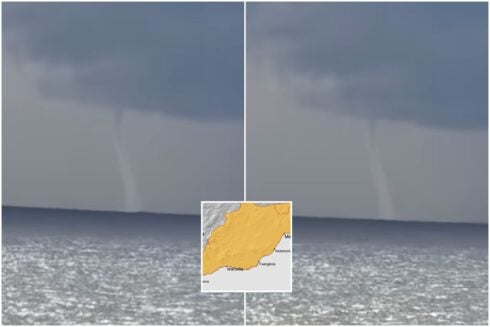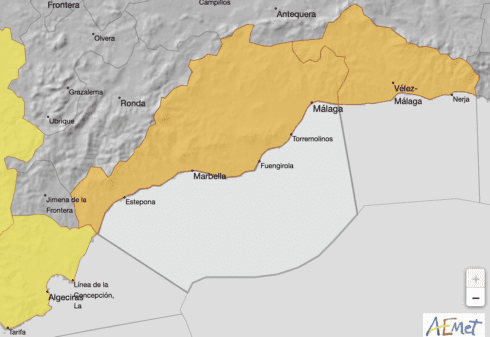Granada: home to the Alhambra palace, the Albaicín and thousands of tapas bars. In the name of research, Mark Roulston visits just a few to sample the wine and food.
IT is Saturday afternoon and the beginning of our weekend two-day tapa tour of Granada. Our aim: to show my visiting parents the historic and culinary delights of the city.
They have been to the city prior to our guide but that was one hot August afternoon many years ago. Then they were quickly whisked around the Alhambra palace – that Muslim fortress and mosque so typical of the city – with 50 other daytrippers. This time, however, they are to be taken slightly off the beaten path and shown the true, everyday Granada.
We arrive in the city from the north, having misread a friend’s directions how best to find the prime parking spaces in the upper Albaicín. We eventually reach our destination but not without asking for directions and driving the long way through the village of El Fargue.
Our lodgings for the weekend is a guest house in the UNESCO World Heritage site of the Albaicín quarter. Set around a courtyard, the 15th century La Casa del Aljibe (www.casadelaljibe.com) on Calle Aljibe del Trillo has splendid, uninterrupted views of the Alhambra. We quickly unpack and hit the town after navigating the quarter’s narrow streets.
The Realejo barrio is our first destination. This former Jewish quarter is favoured over its more celebrated brother, the Albaicín, by some. Its colonial mansions sit on the western slopes of the Alhambra hill. Its roads are cobbled and cars give a slight jump as they slowly bounce their way along.
We walked into the friendly El Cortijo del 16 at the same number on Calle Molinos. Our order of three beers and a tinto con casera blanca (a red wine spritzer) was quickly taken by landlady Patricia. “Quatro primero.” Four firsts, she shouted through to Antonio, her husband in the kitchen (you see, tapas in Granada are normally graded with your third tapa being better than the second being better than the first).
We took our sits with photographs of erstwhile toros bravos on the walls above us. Patricia brought us our first: a plate of quisquillas de Motril (shrimps caught in Motril waters) with home-pickled gherkins. Delicious.
Then a peculiar thing happened. Before we could even ask for more drinks, our second tapa arrived: home-made pate. “Antonio and I spent 40 years living and working in France,” Patricia told me after I had asked where he had acquired his pate making skills.
We then placed an order for our second round of drinks. It was brought with our third tapa: this time a lentil casserole. Pleased with our haul of two drinks and three tapas we paid and left.
We crossed the road to the Plaza Campo del Principe, which was created by Los Reyes Catolicos, Fernando and Isabel, to celebrate the wedding of the son, Prince Juan, in the 15th century. It is the barrio’s largest square and the focal point for its busy night life. We entered the plaza from the south, with the orange, neo-Moorish Alhambra Palace directly in front and above us on the Alhambra hill.
Campo del Principe is also a very lively square during the day, with couples and groups of friends sitting on the many benches and children playing football. Along the southern edge is a constant row of bars and restaurants, all with tables and chairs spilling out onto the plaza. We plump for La Esquinita at the far end.
The small bar is crowded without being uncomfortably so. Smoking is allowed here, and you notice. Our order is quickly taken (again, three beers and a tinto con casera blanca) and the barman shouts to the kitchen: “Tapa para quatro.” When it arrives it is one of the house specialities: broad beans with jamon serrano. Fellow punters around us are busy drinking, chatting and eating tapas; we are staring at the many photographs of the famous people who have visited El Esquinita. Only two among the pop stars and bullfighters are recognisable to me: Manuel Chaves, the President of Andalucía and King Juan Carlos I. We drink up and pay up. Sleep is creeping up on us: the end product of lunch time drinking.
Although tired, we return to our lodgings the scenic way: up the steep Cuesta del Realejo with the snow capped mountains far to our right, into the grounds of the Alhambra, down Cuesta de los Chinos with its unrivalled views of the Albaicín and across the rio Darro. We then wind up the narrow streets to Calle Aljibe del Trillo.
We agree to reconvene at 6 o’clock on our balcony. Then we see the day’s last light hitting the Alhambra: a sight the viewer takes with them for the rest of their days.
As dusk quickly falls we head directly to the Calle Elvira area. Our destination is Bodega Castañeda on Calle Almireceros. This place is popular with tourists and locals alike. Barrels of oak containing various sweet and dry regional wines are behind the bar, a bull’s head to the right of us while hams, undoubtedly dried in the mountain village of Trevélez, hang above. Two of our party has been in this bar many times and know the first tapa is always a damn fine tortilla de patatas. Our order of two glasses of Rioja (a nice 2002 Loriñon crianza) and two sweet Málaga wines is taken by the famously dry bar man. The drinks take 30 seconds to arrive with the tortilla.
Twenty minutes later and we order our second round of the evening: two of more of the Rioja, a Málaga and a wine far drier than him behind the bar, Jerez Oro. The tapa: button mushrooms marinated in sherry vinegar.
We head towards Taberna Salinas (Calle Elvira). The seating area as you walk into this huge, modern bar is reserved for diners and not for those wanting only drinks and tapa. So, we take our seats at the bar. Our order: two vino tinto (a 2003 Besaguin from Rioja) and two white wines (a two-year-old Irache from Navarra). Our tapa: chicken in sauce with hand carved chips.
We then decide to return to the Albaicín and go to one of our favourite squares in Granada, Plaza San Miguel Bajo. At the head of the square is the San Miguel church, built in the 16th century over a mosque. Its architect was Diego de Siloé, responsible for the cathedral in Granada and the church of Salvador in Úbeda. Opposite you will find the oldest bar on the square, the 20-year-old Yunque. It probably has never seen a lick of paint since it opened but is somehow all the better for this. Its owner is Antonio Cirre, a flamenco singer of local renown. “Tonight he is away in Baza singing,” his waiter Ali Abderrahman tells us. We order two glasses of the house red and two of the house white. Our accompanying food is mussels. “Does he ever sing in his own bar?” “Only when there are plenty of pretty girls in and he has had a few to drink,” is Ali’s reply to our question. On the walls are plenty of photographs of Antonio in concert and behind the bar. A man in one of the pictures looks familiar. “That is Enrique Morente [Grammy-nominated flamenco singer]. Every Sunday he comes here when the bar has closed for the day. Antonio and he eat, drink and sing together,” says Ali. We finish our drinks and go home to sleep.
Sunday breaks and we spy the Alhambra through a chink in the curtains. We rise and ready ourselves for the third stage of our tapathon. We have a meeting with Gayle Mackie, who runs Granada Tapas Tours (www.granadatapastours.com). She has promised to show us a few of the bars she uses with customers. You see, if you do not know Granada or feel a wee bit intimidated going into a smoky bar full to bursting with locals then Granada Tapas Tours is for you. “It is a fun, friendly and informative insight into Granada’s real tapa bars,” she says when I press her to describe a typical tour she takes.
We go to a bar previously unknown to the four members of the group: La Chicotá on Calle Navas. As it is a pleasant day, we sit outside as the waiter brings us two beers, agua con gas and a café con leche (some of us feel a little worse for wear after the night before). Our tapa here is queso de cerdo. Its direct translation is pig’s cheese but this is hardly accurate. British readers may know it as brawn (jellied pig’s head). We ask Gayle her favourite tapa. “A canapé with tuna, asparagus, avocado they give you in a bar I know,” she replies. And her least favourite? “It has to be the chickens’ hearts I was once given in the Spanish enclave of Ceuta.”
We settle the bill and Gayle takes her leave after directing us to La Taberna de Chamboa. There is only a man propping up the bar when we enter. We give the bar man our orders (two beers, a tinto con casera and a white wine) and he brings us a plate of fresh, deep fried fish. We tuck in and hardly notice the place fill up around us. Feeling slightly uncomfortable at the size of the place and the amount of people crammed in (think sardines and tin cans), we leave for one last bar before our journey home.
How great the contrast between our first pit stop and our final: La Mancha on Calle Joaquin Costa. Here, we ask the barman for two beers, a tinto con casera and vino blanco. He brings them and we wait expectantly for our food. Envious glances are made at the other punters in the packed bar as they took into their tapas of croquetas and fresh tuna. We wait before, not impatiently, one of our group asks the barman where our tapa is. “We do not do tapa here,” is his reply. We see other customers being handed their food with their order. We quickly finish our drinks and leave with a sour taste in our mouths.






